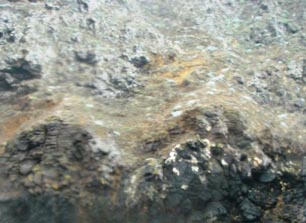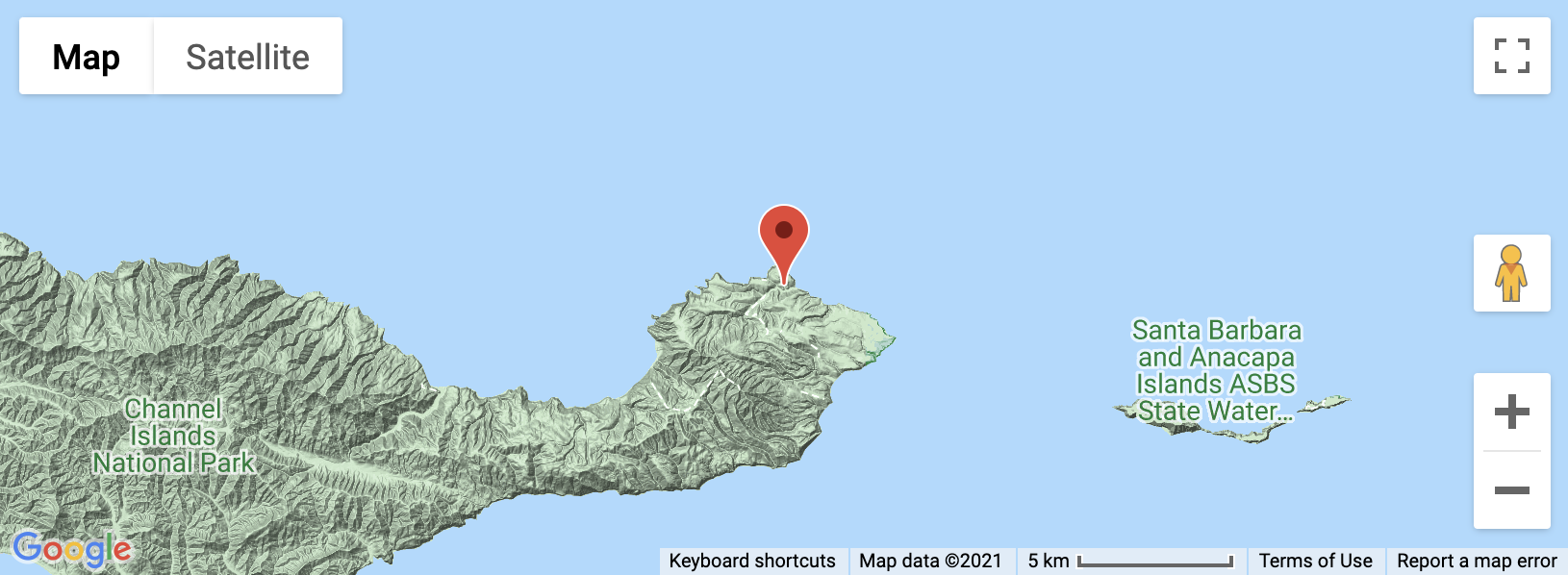
There is no shortage of faults on Santa Cruz Island. If you can to take your geology group on a day hike without them spotting a single fault, you'd better suggest that they change career paths. However, not every place where the rocks change color is a fault, regardless of the orientation of the contact. The two major geologic units of eastern Santa Cruz Island are the Santa Cruz Island Volcanics (Sc V), and the Monterey Formation (See Longinotti & Bartolomeo, this volume). The Monterey formation conformably overlies the Santa Cruz Island Volcanics. (Translation: the Sc V didn't have time to start eroding before the Monterey was deposited on top of it.) However, since the Sc V is a series of lava flows and other volcanic deposits, its surface was not flat to begin with, so the contact appears uneven.
The Sc V are dark colored rocks. The Monterey are light colored rocks. So if at any point you spot dark rocks on top of light rocks on eastern Santa Cruz Island, you can safely assume that you are looking at a fault, as the older rocks are sitting on top of the younger rocks. However, when the Monterey appears on top of the Sc V, you could be looking at a fault, or you could be looking at the base of the Monterey where it overlies the Sc V. Because the rocks of Santa Cruz Island have undergone so much deformation, including uplift and folding (See Selander and Clark, this volume), the orientation of the contact is also not necessarily indicative of faulting. You could be looking at the depositional contact, rotated 60°.

There are also faults exposed within only the Monterey, or only the Sc V, where there is no color change across the contact. Some other common attributes of faults include obvious offset (this would be the most obvious for faults within the Monterey Formation where you can see the layers), rock layers bending towards the fault, or a zone of "chewed up" looking rocks around the fault.
Here's a handy flow chart for spotting faults on eastern Santa Cruz Island (results not guaranteed):


